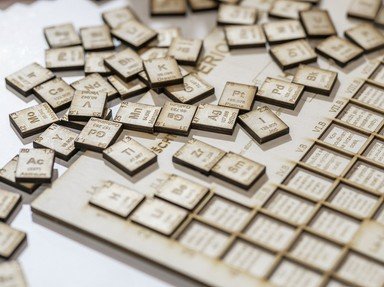Quiz Answer Key and Fun Facts
1. Why is sodium element number eleven in the periodic table of elements?
2. When sodium is stored, it needs to be kept from exposure to the air, as it reacts with atmospheric oxygen and water. What kind of liquid is usually used to cover the sodium in storage?
3. The compound sodium 4-{[4-(dimethylamino)phenyl]diazenyl}benzene-1-sulfonate is more commonly called methyl orange. Methyl orange is often used as an indicator, meaning that the color of a methyl orange solution depends on what?
4. Let's get out of the chemistry lab and into the kitchen. Sodium is commonly found there as part of a white crystalline substance we call salt. What is its chemical name?
5. Breads and biscuits need a leavening agent if they are to have the desired texture. Which of these is NOT a name used for the chemical NaHCO3 when it is used in cooking?
6. The most important commercial use of sodium carbonate (another white crystalline solid) is as a flux to reduce the melting point of silica in glassmaking. What is the most common household use for it?
7. What sodium compound is usually the main ingredient in household products designed for use in clearing drains?
8. Most soap is made primarily from sodium stearate, formed by the reaction between sodium hydroxide and a triglyceride containing esters of stearic acid. What kind of reaction is this?
9. In which area of my house am I most likely to store a dilute solution of sodium hypochlorite in water?
10. My shopping list today includes sodium thiosulfate (yet another white crystalline solid), which I need in order to engage in one of my favourite hobbies. Which of these other items may I also need to purchase in order to have a productive afternoon?
Source: Author
looney_tunes
This quiz was reviewed by FunTrivia editor
rossian before going online.
Any errors found in FunTrivia content are routinely corrected through our feedback system.


